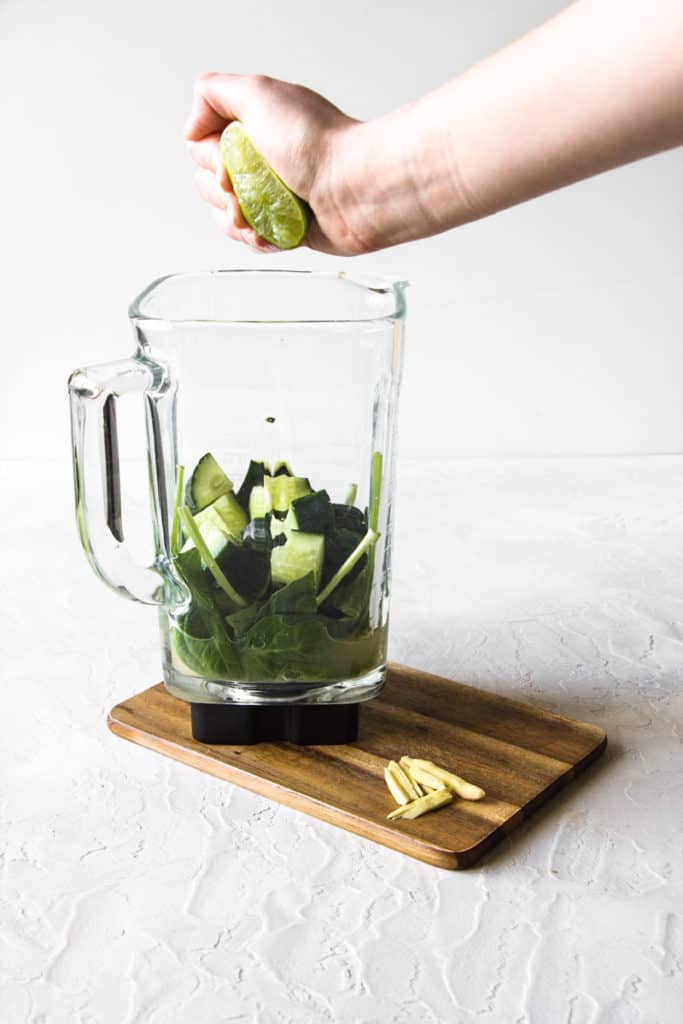You don't have a juicer at home and you're not sure if you should invest in it? Save your money and use your blender! Making green juice with a blender is super easy if you add the right ingredients and follow these 3 easy steps.

Ingredients you absolutely need
- The vegetables of your choice
Add about 1-2 handfuls of your favorite vegetables to the blender (e.g, spinach). If you're adding high fiber vegetables such as celery, fennel or kale, make sure to only add a little amount and lots of liquid to have a juice and not a smoothie consistency. - 1 high moisture veggie/fruit
Cucumbers have the highest moisture content of all vegetables with a water content of 96%. They are a great base for any blender smoothie, especially because of their fairly neutral taste. Watermelon (seedless), cantaloupe and berries are great fruit alternatives. - Liquids
To obtain that juice consistency, it's important to add enough liquids to the blender. For flavor purposes, I recommend adding fruit juice or half juice half water. Citrus juice (e.g., lemon, lime range), apple juice and pineapple juice are great options.
If you want to learn more on how to make green juices taste really good, you should read The Ultimate Guide To Making Green Juices Taste Good.
3 steps to make green juice in a blender
- Add all the ingredients to the blender, including the liquids.
- Blend at high speed for 1 to 2 minutes until smooth.
- Strain the juice to remove any remaining bits and avoid a grainy texture. Running the juice through a sieve will also remove the foam that forms during blending.
Step-by-step with pictures
Add the ingredients to the blender. This recipe used cucumber, spinach, apple juice, lime juice and ginger.
Blend at high speed until smooth.
Optionally strain it through a sieve. This step is more important if the juice contains high fiber vegetables.

Benefits of blender juices versus juices made with a juicer
The main difference between a juice extractor and a blender is that the juicer removes the fiber, while the blender will process the whole vegetables. A green juice made with a blender, therefore, has a slightly higher fiber content (depending on the amount of liquid added) than a juice from an extractor.
Fiber is a non-digestible compound (actually a carbohydrate) present in fruit vegetables, cereals and other foods. Since it cannot be digested, it reaches the colon where it can be fermented by our gut bacteria. Our microbiota will then produce beneficial compounds such as short-chain fatty acids (SCFAs), which promote and improve gut health. Fiber also promotes regular bowel movement, regulates blood sugar levels and lowers blood cholesterol levels. You can read more about the benefits of fiber here (based on scientific literature).
Note that the amount of fiber in a blender juice is still smaller than in a smoothie or whole fruits and veggie.
Green juice recipes you'll love
- Cucumber, spinach, lime, apple and ginger juice (my daily go-to green juice!)
If you liked this guide, make sure to let me know how you liked it by rating it and leaving a comment below! Your feedback really matters! Follow me on Instragram, Pinterest and Facebook to never miss a recipe.











Did you like this recipe? Let me know!